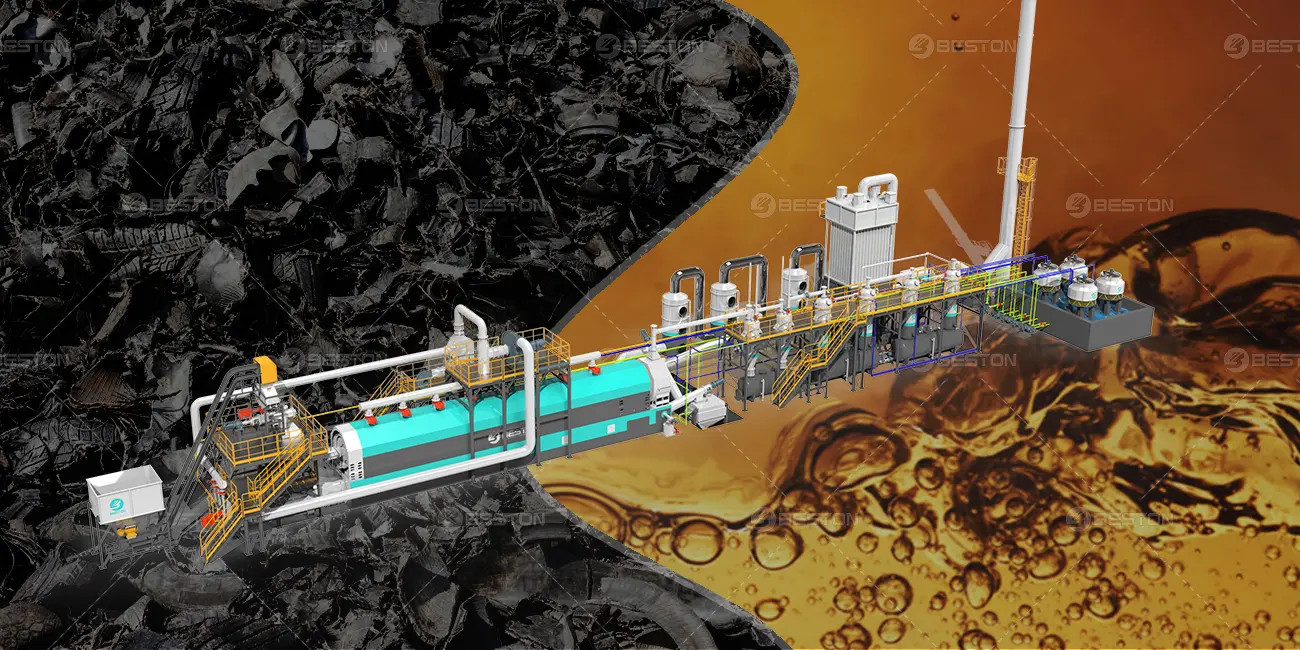Continuous Operation: A Key Factor in the Efficiency of Tire Pyrolysis Plant
The tire pyrolysis process, which converts used tires into valuable by-products such as oil, gas, and carbon black, has become an essential solution for both waste management and energy production. To maximize the efficiency and profitability of tire pyrolysis, continuous operation of the pyrolysis plant is an important consideration. Continuous processing provides significant advantages over batch operation, from reducing labor costs to increasing the throughput of materials. The following explores why continuous operation is integral to the optimal functioning of a pyrolysis plant.
Maximizing Throughput and Productivity
One of the most significant benefits of continuous tyre pyrolysis plant is the ability to maintain a high level of throughput. Batch pyrolysis systems operate in cycles, with each cycle requiring a complete process from loading the raw material, heating, and cooling before the next batch can begin. In contrast, continuous systems allow for the uninterrupted flow of feedstock into the reactor, with the material being continuously processed as it moves through the system.
This constant input and output capability ensures that the pyrolysis plant operates at its full capacity, significantly increasing overall productivity. Continuous operations are particularly beneficial for large-scale facilities, where maximizing production is essential for achieving high returns on investment. Additionally, the efficiency of continuous pyrolysis systems enables operators to meet higher demand levels without the need for constant downtime for loading and unloading materials.

Cost Efficiency and Reduced Labor
Continuous tyre pyrolysis plant requires less manual labor compared to batch systems. In a batch system, operators must frequently stop the process to load and unload materials, monitor the equipment, and handle the final products. This not only increases labor costs but also adds to operational inefficiencies due to frequent interruptions. In continuous systems, once the plant is set up, it can run with minimal human intervention, reducing the need for constant monitoring and manpower.
Furthermore, the reduced downtime associated with continuous operation results in lower maintenance costs. As the system is consistently running, wear and tear on components are more predictable, allowing for proactive maintenance schedules. In contrast, the frequent stopping and starting of a batch process can lead to erratic wear on equipment, increasing the likelihood of breakdowns and costly repairs.
Improved Energy Efficiency
Continuous pyrolysis operations are generally more energy-efficient than their batch counterparts. In batch systems, the heating and cooling phases between cycles can be energy-intensive. Every time the reactor is restarted, energy is required to bring it up to temperature, which can be inefficient, especially if there are long periods of downtime.
With continuous operation, however, the pyrolysis plant maintains a more stable temperature throughout the process. The heat generated from the pyrolysis reaction can be captured and recycled to maintain the system's thermal balance. Moreover, the consistent heat production in continuous systems reduces the energy required to initiate each cycle, leading to significant energy savings over time.
Consistent Product Quality
Maintaining a consistent product quality is crucial in the pyrolysis industry, particularly for markets that demand high-quality bio-oil, carbon black, and syngas. Continuous operation contributes to greater uniformity in the quality of the output. When the pyrolysis process is continuous, temperature fluctuations and other operational inconsistencies are minimized, ensuring that the by-products are produced at a consistent quality level.
This is especially important in industries where product specification is strict, such as the fuel and materials sectors, where bio-oil and carbon black are used in various applications. A stable and predictable product output helps in building customer trust, establishing long-term business relationships, and ensuring competitive advantage in the marketplace.
Reduced Environmental Impact
Environmental sustainability is increasingly becoming a priority across industries. Continuous pyrolysis systems offer the potential to reduce environmental impacts compared to batch systems. With continuous operation, the plant can optimize its gas collection and management systems, ensuring that harmful emissions are minimized and that the overall carbon footprint is reduced.
Furthermore, continuous plants are better equipped to capture and recycle syngas (a by-product of the pyrolysis process), which can be used to generate energy for the plant itself, further reducing the environmental impact. This self-sustaining energy model makes continuous pyrolysis plants more eco-friendly and capable of meeting regulatory standards for emissions control.
Scalability and Long-Term Profitability
Scalability is another important advantage of continuous pyrolysis plants. As demand for pyrolysis by-products grows, a continuous system can easily accommodate higher throughput with relatively minimal changes to the existing setup. In batch systems, scaling up often requires purchasing additional equipment and extending processing cycles, which increases capital and operational costs.
On the other hand, the scalability of continuous systems allows operators to increase production without dramatically increasing costs, making it a more cost-effective option for long-term profitability. This scalability, coupled with reduced operating and maintenance costs, contributes to higher return on investment, ensuring that the pyrolysis plant remains a profitable venture as it grows.